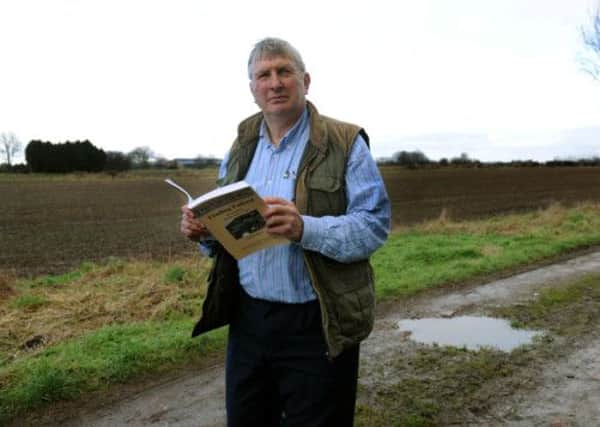Battlefield claim may win war over plan for homes


A bitter planning row spanning more than three decades has centred on the land earmarked for the 657-home project on the outskirts of York, which campaigners maintain is the site of the Battle of Fulford in 1066.
The Yorkshire Post can reveal the protracted saga has taken a dramatic new twist as activists are intensifying their campaign to ensure the land is given protected status.
Advertisement
Hide AdAdvertisement
Hide AdEnglish Heritage has admitted the site remains “the most likely candidate” for the clash between Viking invaders and English forces, which had a huge impact on the Battle of Hastings and William the Conqueror ultimately being crowned King of England.
Officials from English Heritage are now undertaking a review of their decision not to officially designate the land as a battlefield after being presented with new evidence.
Members of the Fulford Battlefield Society who are staunchly opposed to the housing scheme, have claimed the planning fight has been mired in misleading information presented by one of the UK’s biggest developers, York-based Persimmon Homes.
Historian Chas Jones, who formed the society, has called for a public inquiry amid accusations the planning system has been misled by flawed evidence.
Advertisement
Hide AdAdvertisement
Hide Ad“This is a site that should be cherished and not simply concreted over with a housing development,” he said. “To think that evidence of a battle which has defined English history is under threat of being lost forever is an absolute travesty.
“The council has failed in its duty as guardian of this irreplaceable piece of our heritage by supporting all of the misleading claims set out by the developers. They should instead be working to develop this wonderful heritage asset for the economic and cultural benefit of us all.”
English Heritage has confirmed that if the land is added to the Register of Historic Battlefields, planning permission approved by the Government in 2007 following a public inquiry would have to be reviewed.
The move could then halt the housing development at a site dubbed Germany Beck that has already been put on hold by Persimmon Homes during the economic downturn. The firm, which has its national headquarters in Fulford close to the disputed land, would not be drawn on whether it would launch a compensation claim if faced with dramatically revising or even aborting the development.
Advertisement
Hide AdAdvertisement
Hide AdEnglish Heritage admitted there has been “a great deal of debate” surrounding the Battle of Fulford, but a question mark still remains over its precise location. Extensive archaeological work has found evidence of Iron-Age, Romano-British and medieval activity, but nothing can be “securely identified” as coming from the Battle of Fulford, it said.
A spokeswoman confirmed an initial decision announced in November not to designate the land is being reviewed. The national register already lists 43 battlefields including Stamford Bridge and Towton in North Yorkshire as well as Hastings in East Sussex, Bosworth Field in Leicestershire and Naseby in Northamptonshire.
The spokeswoman said: “While Germany Beck remains the most likely candidate for the site of the Battle of Fulford, it is not possible to say that it has been securely identified.
The battlefields selection guide is clear that historical significance and secure identification of the site are essential criteria for inclusion on the register.”
Advertisement
Hide AdAdvertisement
Hide AdRepresentatives from both York Council and Persimmon Homes stressed there is no conclusive proof to suggest the land was the location of the battle.
The director of Persimmon Homes Yorkshire, Simon Usher, was adamant English Heritage’s assessment was “thorough, comprehensive and conclusive” in its recommendation not to include the site on the register.